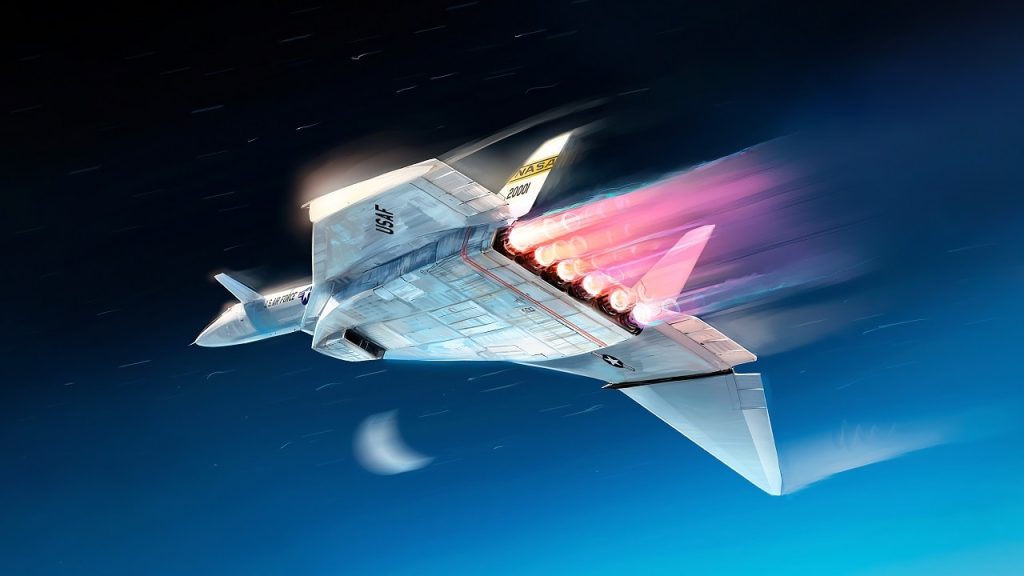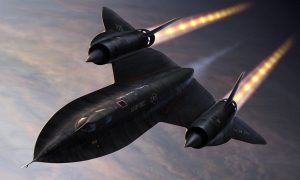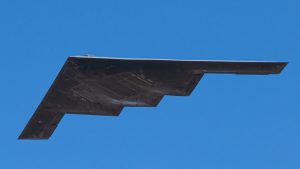The XB-70A was supposed to have speeds up to Mach 3.1 (2,056 miles per hour, or 3,309 kilometers per hour).

Strategic bomber XB-70A Valkyrie can penetrate deep targets at high speeds. In the 1950s, the XB-70A Valkyrie was envisioned as a high-altitude, Mach 3-capable nuclear strike bomber (three times the speed of sound). The Strategic Air Command intended the B-70 to be a nuclear-armed, deep-penetrating supersonic strategic bomber that would be used against the Soviet Union.
Due to its speed, no enemy would have been able to defend against it, but by the early 1960s, a new danger had emerged in the form of upgraded surface-to-air missiles (SAMs).
Similarly, cheaper ICBMs (intercontinental ballistic missiles) armed with nuclear weapons were being deployed. A single Valkyrie bomber was never built or put into service because it canceled the B-70 program. Although it had the potential to become a historical footnote, the United States Air Force saw value in it not as a bomber but as a platform to test the aerodynamics, propulsion, and other aspects of big supersonic aircraft.
The experimental XB-70, with its delta-wing profile, resembles the British-French turbojet-powered Concorde supersonic passenger aircraft, which was in service from 1976 to 2003. On the other hand, the XB-70 was thought of a long time before the high-speed passenger airliner was even a thought.
The XB-70A was supposed to have speeds up to Mach 3.1 (2,056 miles per hour, or 3,309 kilometers per hour). Its top speed was Mach 3.00 at its service ceiling of 75,550 feet (23,012 meters), and it could reach Mach 1.90 at 35,000 feet (10,668 meters) (1,254 miles per hour, or 2,018 kilometers per hour) (1,982 miles per hour, or 3,190 kilometers per hour). They expected B-70’s maximum range to be 4,290 miles, while its combat range was projected to be 3,419 (5,502 kilometers) or 6,904 kilometers.
The XB-70A’s best defense was not only high speed but also high altitude. The bomber was designed to fly so high and fast that it would have been difficult for an adversary, especially the Soviet Union, to defend against it. Unfortunately, improvements in missile technology occurred at the same time as the bomber’s development. But by the early 1960s, even such high-flying bombers were vulnerable to the latest surface-to-air missiles (SAMs), rendering the speed and altitude that had promised to protect them useless.
The price tag was another factor that prevented Valkyrie’s development as a bomber. The expected price of $24.5 million per unit, or $237 million in 2015 dollars, was too high for such a plane, especially since intercontinental ballistic missiles are more cost-effective.
Even though canceled the program before any prototypes were finished, the Air Force decided to move forward with constructing two aircraft prototypes, which were then used in a research program to test the aerodynamics, propulsion, and other characteristics of such a large supersonic aircraft. One of the two prototypes developed had its maiden voyage on September 21, 1965, with Chief Test Pilot Alvin S. White and Colonel Joseph F. Cotton, U. S. Air Force, at the controls. To go to Edwards Air Force Base, the first flight took off from Air Force Plant 42 in Palmdale, California. The second one ascended to the skies on July 17, 1965. After its first voyage, it was restricted to a top speed of Mach 2.5 out of safety concerns.
The national Aeronautics, Air Force, and Space Administration put both prototypes to work on a series of research flights. Sadly, Maj. Carl Cross, the plane’s co-pilot, was killed when their two planes collided in midair.
The Valkyrie AV-1 (A.F. Serial No. 62-0001) prototype is exhibited at Wright-Patterson Air Force Base (AFB), Dayton, Ohio, in the Research & Development Gallery of the United States Air Force’s National Museum. As far as the museum’s collection of planes goes, it’s a big one.






